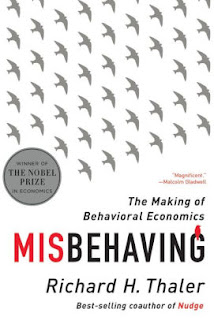I've been listening to Misbehaving: The Making of Behavioral Economics by Richard Thaler on audiobook. In chapter 3, "The List," there is an interesting analysis of a company losing money because managers are afraid to lose their jobs. Which leads them to avoid some projects. I saw this only a little in my work experience.
In chapter 29, "Football," there is an analysis of how to game the draft to end up with an overall better team. Basically, it is chapter 3 but told in a more interesting manner. Replace the star football player with the star project and you get the same problem of putting all your resources in one basket. The analysis goes deeper and points out that the coaches and managers are not solely to blame. They are going after the star players (star projects) because these are what the owner (CEO/chairmen) want. I saw this more often in my work experience.
The higher up in a company the less the employee looked at the project data and the more they looked at what their boss wanted. If you are a manager, director, VP, C-suite employee, or chairman then please read this book. It won't give you answers but it might force you to acknowledge that you are making decisions based on the wrong data. Then you can give the company a better chance at [overall] success.
Okay, I know, I'm skipping over the problem of "the manager who doesn't work on the boss' pet project still gets fired." Yeah, that sucks. You deserve a better boss. But guess what? You saved your department for another year and only had to sacrifice yourself. Had you done the doomed project you might have doomed the department too.









